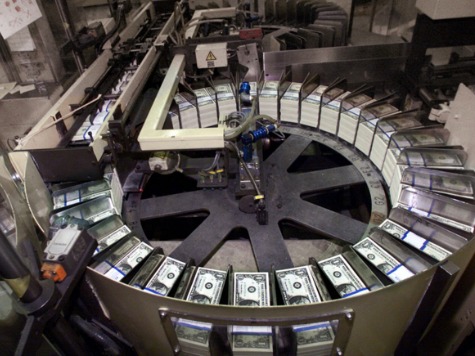
When Rep. Paul Ryan (R-WI) and Sen. Patty Murray (D-WA) announced their budget deal Tuesday night, few specific details were released. The full scope of the budget deal will begin to emerge on Wednesday, after the duo file legislative language and its provisions are analyzed. Breitbart News, however, has obtained a 4-page summary of the deal that provide a good outline of the agreement. These are the 4 most important take-aways from this deal.
1. The Deal Increases Federal Spending. Discretionary spending, the only spending controlled by the Congressional budget process, would rise next year to $1.012 trillion. Spending in 2013 was $986 billion and, under current law, was scheduled to drop to $967 billion next year. In other words, spending will be $45 billion higher than under existing law.
2. The Deal Increases Federal Revenue. While the additional revenue is raised through “user fees” rather than taxes, it is generally a distinction without a difference. One of the major sources of new revenue is an additional surtax on airline tickets, ostensibly to cover TSA airport screening. In the last 5 years, though, TSA’s budget increased 18%, while the number of passengers it screened by 11%. A user fee is directly related to the cost of providing a government service. Fees beyond that level are a tax.
The deal also reportedly raises revenue by auctioning off broadcast spectrum and hiking other fees. Details of these will emerge in the coming days, but it is important to remember that any additional revenue raised under this deal is to finance additional spending, not deficit reduction.
3. Spending Cuts Fuel More Spending. The deal reportedly cuts spending throughout the budget. One of the more concrete proposals revealed so far is requiring federal employees and members of the military to contribute more to their federal pensions. These items are obviously sound fiscal policy, but they should be employed to reduce the deficit, not fuel additional spending. The government has a few obvious places where it can trim spending. Devoting those cuts to increased spending leaves much tougher choices in the future.
4. The Promised Deficit Reduction Will Never Happen. The summary document on the Ryan/Murray deal promises that the agreement will reduce the deficit by $28 billion over the next ten years. Never mind that this amount is a rounding error when the government will spend around $40 trillion in this time-period, it is also a fiction. The budget document says these savings will be achieved by “requiring the President to sequester the same percentage of mandatory budgetary resources in 2022 and 2023 as will be sequestered in 2021 under current law.” In other words, the sum total of all the deficit savings in the Ryan budget deal will come about if a future President extends part of the sequester cuts two years past they are set to expire. Does anyone think a President a decade from now will feel bound by the words of Ryan and Murray?
Looking at just the outlines of the deal reminds one of those late-night ads hawking reverse mortgages. Having spent available income and exhausted traditional lines of credit, the homeowner borrows and spends against the value in his home. The Ryan budget deal employs a lot of gimmicks and a small amount of sound fiscal policy. Unfortunately, all of these tricks are used to fuel additional spending, rather than cut the deficit.
Like a someone tapping a reverse mortgage, the US will eventually lose its home.

COMMENTS
Please let us know if you're having issues with commenting.